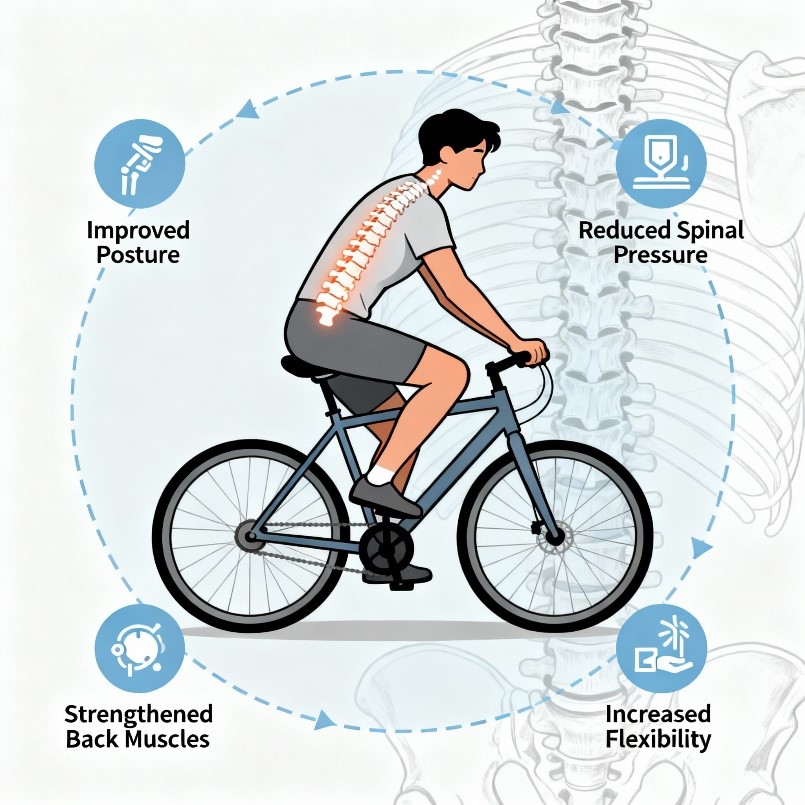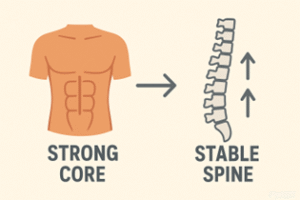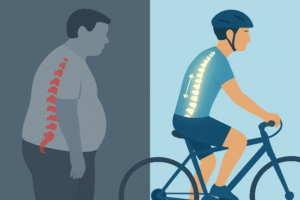Cycling is often celebrated for its cardiovascular benefits, but its positive effects on spine health are just as important. Whether used as a daily commute, a recreational activity, or a structured fitness routine, cycling can contribute to maintaining spinal mobility, reducing stiffness, and supporting overall musculoskeletal health.
1. Low-Impact Exercise for the Spine:
Unlike running or other high-impact sports, cycling places minimal stress on the spine and joints. The smooth, repetitive pedaling motion helps maintain flexibility and encourages blood circulation without causing jarring movements that could strain the back.
2. Strengthening Core and Postural Muscles:
Cycling engages the core muscles (abdominals and lower back), which play a crucial role in supporting the spine. A stronger core provides better spinal alignment, improves posture, and reduces the risk of back pain. Over time, this balance between leg and core muscle activation enhances spinal stability.
3. Promoting Spinal Mobility and Circulation:
The rhythmic movement during cycling promotes healthy circulation around the spine and intervertebral discs. Good blood flow delivers nutrients to spinal tissues and helps remove waste products, which supports disc health and reduces stiffness.
4. Weight Management and Reduced Spinal Load:
Excess body weight increases pressure on the spine, contributing to conditions like low back pain or disc degeneration. Cycling is an effective way to burn calories, maintain a healthy weight, and minimize mechanical stress on the spinal column.
5. Psychological Benefits that Support Spine Health:
Chronic stress can lead to muscle tightness and back pain. Cycling, like other aerobic exercises, stimulates the release of endorphins, which reduce stress levels and muscle tension, indirectly benefiting the spine.
6. Importance 0f Proper Cycling Posture:
While cycling has many spinal benefits, posture is critical. Poor bike setup or prolonged forward bending can strain the neck and lower back. To maximize spinal health benefits:
- Adjust the seat and handlebars to maintain an upright, neutral spine.
- Engage the core muscles for support.
- Avoid slouching or excessive forward leaning.
- Take breaks during long rides to stretch and relax.
Conclusion:
Cycling, when done with correct posture and proper equipment adjustment, is an excellent way to maintain a healthy spine. It strengthens supportive muscles, improves circulation, reduces excess load on the spinal column, and enhances overall mobility. As part of a balanced lifestyle, cycling can be both a preventive and therapeutic activity for spinal well-being.











